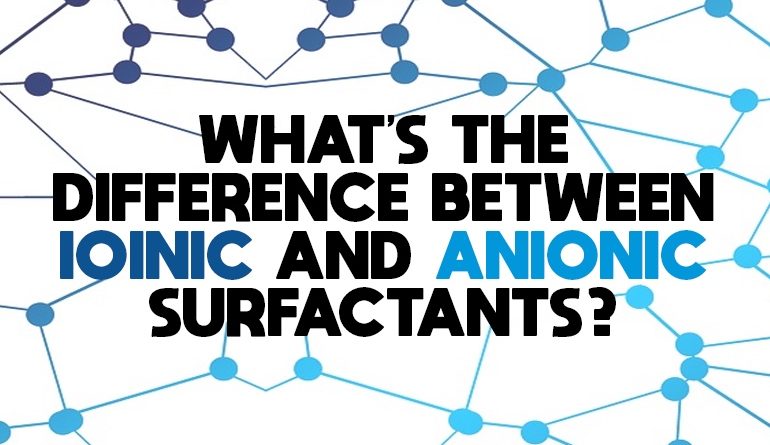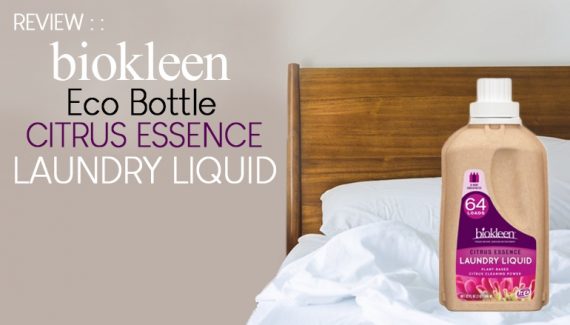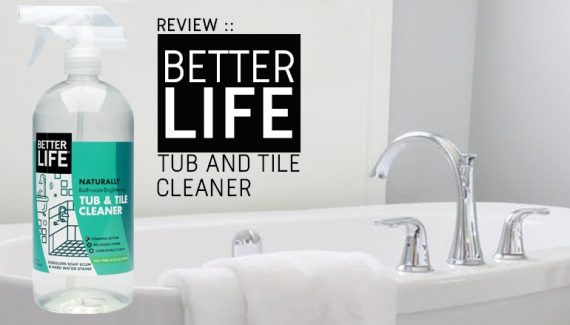Safe Household Cleaning is reader-supported. All reviews are independent and any products reviewed are purchased by the site owner. To help fund this model, some of the links on the site are affiliate links. If you decide to make a purchase from one of these links, this site will receive some commission. At no cost to you. It helps keeps this place running. Learn more
If you look at a cleaning product label from a company who refuse to disclose their ingredients (the bad guys), you’ll often see something like this.

Aside from not actually telling you anything of note, the labels will always refer to Anionic and Nonionic Surfactants.
Even for me, this means very little.
What the heck are Anionic or Nonionic surfactants?
The purpose of this article is to demystify all of that, and explain exactly what these labels are referring to.
What are surfactants?
It can be difficult to remove greasy stains with water, so manufacturers add surfactants to cleaning products.
Surfactants are essentially cleaning agents. Soap is an example, although these days manufacturers tend to use synthetic detergents.
They are actually very smart chemicals that have two opposing ends. One end of the chemical is soluble in water and the other in fat. Hence, a surfactant can help mix oils and waters (which would normally sit on top of one another). When you have a liquid sitting on top of oil, there’s a lot of surface tension. Surfactants, by mixing the two, can reduce this surface tension, helping to wash away oily and water-based stains.
The chemistry of surfactants is complex, and most cleaning products use a blend of carefully chosen surfactants (e.g. fabric softeners require different surfactants to handwashes). Surfactants are categorized by the ‘chemical charge’ of their water-soluble end:
1. Ionic (surfactants that have a charge)
An ionic surfactant is one that has an electric charge.
There are three types of ionic surfactant:
- Anionic (negatively charged)
- Cationic (positive charge)
- Amphoteric (contains a positive and negative charge)
Anionic surfactants are commonly found in laundry detergents, handwashes, kitchen cleaners, body washes. They are the most widely used and versatile surfactants. They are the most effective at removing oily residue. But, as the most potent surfactants, also cause skin irritation.
The most popular and widely used surfactants, anionic surfactants can be found in almost every cleaning product. It’s estimated that 45% of the $46 billion global surfactant market is made from anionic alone [1]. The most popular anionic surfactants are [2]:
- Sodium lauryl sulfate (SLS)
- Sodium laureth sulfate (SLES)
- Ammonium lauryl sulfate (ALS)
- Ammonium laureth sulfate (ALES)
- Sodium stearate
- Potassium cocoate
Anionic surfactants can be produced from a range of raw fats and oils, including soybean, palm, tallow, and coconut. This has led to the development of milder anionic surfactants such as ‘potassium cocoate’, which reduces skin irritation and palm oil consumption while improving ecological sustainability (although are more expensive) [3].
The other two ionic surfactants are used much less frequently.
Cationic surfactants are commonly found in fabric softeners and disinfectants. They are less commonly found in household products, but cationic surfactants are more effective at killing microorganisms, and so are used as disinfectants.
Amphoteric surfactants are most commonly found in shampoos and body washes. These are the least potent surfactants and are found in personal care products designed for sensitive skin. They are also good foaming agents, so are also used in handwashes.
2. Nonionic (no charge)
Nonionic surfactants contain no charge. They are commonly found in laundry and dishwasher detergents. They are the second most widely used surfactants after anionic. These molecules have no charge and so they are less likely to form a ‘soap scum’ in hard water. They are generally less effective than anionic, but for some people cause less skin irritation.
If anionic are the most popular surfactants, nonionic are a close second, widely used in a range of cleaning, personal care, and disinfectant products as well as industrial processes. The most common anionic surfactants are:
- Cocamide monoethanolamine (Cocamide MEA)
- Cocamide diethanolamine (Cocamide DEA)
- Fatty alcohol ethoxylates
- Amine oxides
- Sulfoxides
In areas with hard water (high mineral content), nonionic surfactants are more heavily marketed, as they are less likely to form a soap scum [4]. The nonionic surfactants are less likely to cause skin irritation, but this is associated with a less potent cleaning ability.
Most cleaning products blend anionic and nonionic surfactants to balance cleaning potential with the risk of skin irritation.
How can I tell if an ingredient is anionic or nonionic?
In most countries, there is no legal requirement for cleaning products to specify which surfactants they use (including the US and EU). It’s a bad situation, that led to the formation of this site. We will only review products that have full ingredient disclosure. Otherwise, it’s impossible to know what kind of surfactant is giving you an itch, a rash or much worse.
Here’s what I mean. The following are examples of common cleaning product labels – showing the extent of the available information in mainstream laundry detergents.
Tide Original Scent HE Turbo Clean Liquid Laundry Detergent (US)
- ‘Biodegradable surfactants (anionic and nonionic)’
Persil Non-Bio Laundry Liquid (UK)
- ‘15-30% Anionic surfactants. 5-15% Nonionic surfactants. Soap <5%’
Ecover Ökologisches Woll- und Feinwaschmittel (Germany)
- ‘5-15% Anionic surfactants, <5% Nonionic surfactants, Soap’
With the provided information it’s easy to tell the blend and type of ingredients, but impossible to determine the specific chemicals.
That said, even if the ingredients were all listed, there is no straightforward way to identify between an ‘anionic’ or ‘nonionic’ surfactant, without research e.g. ‘potassium cocoate’ is anionic, ‘glyceryl cocoate’ is nonionic.
Summary
Surfactants are used in cleaning products to reduce surface tension, helping to wash away oil and grease. There are four main categories of surfactant, ionic (anionic, cationic, and amphoteric) and nonionic. Anionic are the most widely used and potent, but they are associated with skin irritation. Nonionic are also found in many household products, and their main advantage is to not form ‘soap scum’ in hard water.
Very few cleaning products list their surfactants and are not currently compelled to do so by law in either the US or EU.
Instead, ingredient label list the overall blend of surfactants, making it impossible to avoid particularly harsh or allergenic ingredients.
So stick with us for now. There is change afoot with legislation, but in the meantime, we will only review products that have full ingredient disclosure. We will give our opinion on these ingredients, and we will tell you how well they clean.
That’s why we’re here!
References
[1] Grand View Research, Inc. (2015). Surfactants Market Analysis by Product, by Application, and Segment Forecasts To 2022. www.grandviewresearch.com
[2] Falbe, J. (2012). Surfactants in consumer products: Theory, Technology and Application. Springer Science & Business Media.
[3] Pedrazzani, R., Ceretti, E., Zerbini, I., Casale, R., Gozio, E., Bertanza, G., & Feretti, D. (2012). Biodegradability, toxicity and mutagenicity of detergents: integrated experimental evaluations. Ecotoxicology and Environmental Safety, 84, 274-281.
[4] Mukhopadhyay, P. (2011). Cleansers and their role in various dermatological disorders. Indian Journal of Dermatology, 56(1), 2.



14 Comments
I am more interested in knowing if I can use ordinary household laundry or washing-up liquid with weedkillers as a surfactant?
Why is that necessary as most ‘good’ weedkillers already have **surfactants** included? Check the list of contents on the label.
Sledgehammer Herbicide must be applied with a non-ionic surfactant to ensure uptake. At AU$65 for 25g it’s not a cheap weed killer. So Caroline’s question deserved a proper answer, one which I’m also interested in hearing. Your answer wasn’t an answer it was a bypass.
Hi Ethan, I’m in search of a laundry detergent with nonionic surfactants as we have hard water where we live in the US. I’m no chemist and the specifics of finding such detail is proving to be difficult. After many product trials, I have yet to find something that works properly to remove build up of body oils on our sheets, pillow cases and towels.
In section 2 where you describe nonionic surfactants, I’m wondering if there is a typo. You state “The most common anionic surfactants are:…” and continue to name the surfactants. Did you mean nonionic surfactants? Thanks in advance for the clarification.
Claire
Brilliant article. Thank you
Thank you Vera!
To whom it may concern:
Based upon the ingredients in a Tub O’ Towels heavy duty cleaning wipes, can I pour isopropyl alcohol into the container to create a disinfectant wipe?
Thank you so much!
Another typo in “So stick with us for now. There is change afoot with legistlaion” Thanks for writing this though. Very informative and we need more people standing up for consumer rights!!
Thank you! Typo corrected too.
You have mentioned in your article….
The most common “anionic” surfactants are:
Cocamide monoethanolamine (Cocamide MEA)
Cocamide diethanolamine (Cocamide DEA)
Fatty alcohol ethoxylates
Amine oxides
Sulfoxides
Did you mean to say non ionic surfactant ?
Very informative thank you. May I just point out for the sake of accuracy – and as someone else has done previously – to an error that has eluded editing so far: [anionic] in the following section introducing examples of nonionic surfactants:
Cheers
Very informative thank you. May I just point out for the sake of accuracy – and as someone else has done previously – to an error that has eluded editing so far: [anionic] in the following section introducing examples of nonionic surfactants:
If anionic are the most popular surfactants, nonionic are a close second, widely used in a range of cleaning, personal care, and disinfectant products as well as industrial processes. The most common [ANIONIC] surfactants are:
Cocamide monoethanolamine (Cocamide MEA)
Cocamide diethanolamine (Cocamide DEA)
Fatty alcohol ethoxylates
Amine oxides
Sulfoxides
Cheers
Can you use low splash bleach to shock treat a water well the same as regular bleach? is the water still safe to drink afterwards?
Is there a section 3 missing? three types are named but only two are described .. cheeers.